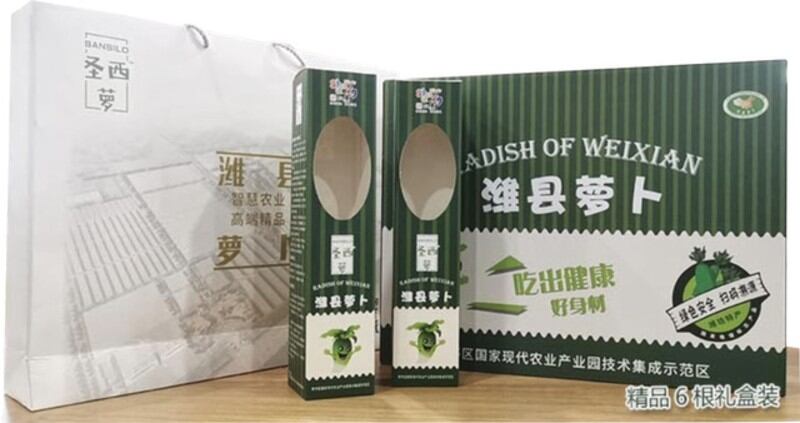The study on Major Green Technologies and Implementation Mechanisms in Chinese Cities was commissioned for the China Council for International Cooperation on Environment and Development (CCICED), a high‑level advisory body on research and policy recommendations to the Chinese government.
This was in conjunction with the CCICED’s Special Policy Study 3.2 which was submitted to the government with recommendations for its 14th Five-Year Plan (2021 to 2025), and covered six major pillars: Energy, Buildings, Mobility, Land use, Food and Water.
Within the Food pillar, WEF identified three major challenges with significant potential for China to tackle using green technology, or technology to help with ‘the massive transformation required to become green cities’ – these were food waste, food safety and food security.
Food waste
Food waste has been one of the main topics of focus in China in recent months, after President Xi Jinping declared a ‘war on food waste’ and calling locals to ‘put an end to shameful food wastage’ earlier this year.
“China needs to maintain a sense of crisis and urgency about food supply and security especially after COVID-19 even if we had a good harvest last year [and can meet consumption],” Xi said in a public speech.
WEF researchers proposed that China tackle this escalating problem by also looking at food waste in the value chain from production to consumption, which stands at around 30% globally, and reduce this by implementing a digitalised food supply chain from farm to fork.
“[This digital platform would] include everything from B2B procurement for agricultural and food products to platforms that enable farmers to easily sell products to consumers, [utilising technology from online payments to big data to AI],” they said.
“If well implemented, a digitalised food supply chain could reduce food loss by 50%. Considering that annually 835 million tonnes of corn, rice, vegetables, sugar cane and wheat are produced in China, food loss reduction could result in up to 125 million tonnes of these products saved.
“Moreover, high‑value agriculture such as fruits and vegetables, dairy and meat, are more susceptible to food loss and waste along the supply chain, meaning the financial benefits will be proportionally larger.”
One of the main recommendations was for artificial intelligence (AI) to be employed at the crop agriculture phase.
“AI helps agricultural professionals to rationally plan production by analysing data, such as ambient temperature, rainfall and soil salinity, to ultimately improve crop output,” they said.
However, a major barrier to the implementation of this was also highlighted, namely farmers’ inadequate access to digital tools and the lack of knowledge of such digital applications.
“[This is a role for the governments, which need to] invest the resources to provide infrastructure and build capacity to improve the uptake of relevant knowledge,” said WEF.
Food safety
Food safety has been one of China’s greatest challenges over the past few decades, with numerous food safety scandals appearing across many food and beverage sectors from reused gutter oil to soy sauce made from human hair to the infamous 2008 melamine-contaminated infant formula scandal.
Although tougher regulations have been put in place, and in 2018 Chinese Vice Premier Han Zheng also urged harsher punishments including lifetime bans for food safety offenders who knowingly flouted the rules, food safety worries are still a leading concern in the country.
“71% of China’s population believes that food safety is a big or moderately big problem,” said the WEF researchers.
Here, the use of traceability technologies including blockchain and Internet of Things (IoT) were urged as the best way to resolve this issue.
“Consumers are increasingly concerned about the provenance and safety of their food [and] the lack of traceability makes it difficult for them to validate where their food came from; crack down on fraud; and meet health, nutrition or environmental goals,” they said.
“Traceability technologies can enhance [enable food firms and governments] to identify, respond to and even prevent food safety issues, [as well as] meet consumer demand for more transparency to inform their purchase decisions.
“[It will also] reduce their risk of buying illegal, unethical or counterfeit products which is another major concern.”
However, it was also pointed out that the use of such technology was likely to come with additional costs as an added burden, making its usage highly likely to be biased for larger F&B firms with more funds, and also limit the consumer base benefitting from this to a more financially well-off demographic.
“These requirements (added costs) risk favouring larger producers or companies [that] can more easily absorb the added cost and adjustments [and leave out smaller ones],” they added.
Case in point, China is already using traceability technology in some of its National Modern Agricultural Industrial Parks, but currently this is generally limited only to high-end, premium produce and not for foods that the average consumer would be purchasing at their local supermarket.
“To ensure that benefits are maximized, there is a need to focus on ‘pathways to scale’ – policies, standards and economic models – that will allow small‑scale producers and consumers from underserved communities to benefit from the technology deployment,” said WEF.
Food security
Ever since COVID-19 broke out, China has been grappling with widespread local food security concerns, but although the government appears to have stabilised worries about grain supply, concerns over meat supply have been on the rise.
“[The] volume of animal food and feed needed to feed China’s population creates significant dependency on imports, [which has been] further exacerbated by recent diseases directly impacting the Chinese supply of pork and chicken – notably the African swine fever and avian influenza,” said the report.
Here, the researchers proposed that the Chinese government place its bets on alternative protein as a green technology and intensify resources placed into both plant-based and cell-based meats, suggesting that sufficient support could lead to China quickly commercialising cell-based meat.
“The distribution and accessible pricing of [alternative proteins] could be supported by government investments, policies, and regulatory frameworks reformed to provide positive incentives for the producers to accelerate development,” they said.
“Cultured meat is not yet commercially available; significant government investment and subsidies, attuned to the scope of investments by countries in renewables, could help to bring these products to the commercial state.”
But there’s a catch – two catches, in fact. First, for plant-based meat, there is a significant cultural barrier here, as meat has an important social and cultural function in China, where its consumption signals status or hospitality, which the researchers acknowledged in the report.
Second, for cell-based meat, public opinion of this technology is still very far away from anything resembling acceptance – experts have said that Chinese consumers find the concept ‘creepy’.
The WEF researchers did not mention this in the report, but instead claimed that ‘consumers look more favourably towards alternative proteins following the avian influenza and African swine fever outbreaks’ – and urged the Chinese government to change local dietary guidelines to ‘support the diversification of protein sources’ as well as ‘increase government procurement of these products for meals and banquets’.
China is expected to release the final version of the national 14th Five-Year Plan in March 2021.





